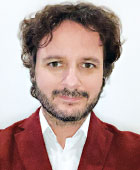Clerkship for Personal Growth: Teaching Psychiatry to Medical Students
Abstract
Psychiatry teachers should use multiple communication skills to stimulate curiosity, creativity, and compassion to maximize medical students’ experience in their psychiatry rotation.
A psychiatry clerkship offers the distinctive opportunity to study not just the human brain, but the human mind. Critically, it is not just the minds of patients but also those of students and teachers who are impacted; done right, a psychiatry clerkship leaves no one untouched.
Before students are exposed to the field of psychiatry, all kinds of ideas may cross their minds. People have different thoughts and feelings about what mental illness is and how it should be handled. At the same time, psychiatry, our beloved field, has been affected by its troubled past and attempts to devise treatments that seem barbaric today. Nonetheless, a day or two into medical students’ psychiatry clerkship rotation, prior conceptions about psychiatry rapidly fade away. They are pleased to discover that psychiatry can be joyful, approachable, and helpful not only in the treatment of individuals with mental illness but also in understanding the psychology of our daily lives.
Though most students are excited for their psychiatry clerkship, they start with some trepidation. After being assigned to a new team and given a brief orientation, they have to figure out the culture of their new rotation quickly. Sometimes they get to work with a team for a few weeks, other times just one afternoon. While there are overall goals, every supervisor they encounter may have particular expectations for them. Whatever happens is no longer completely up to them. Treatment may not go well even if they are trying hard. Being intelligent or a hard worker is no longer the key. Now they must also demonstrate interpersonal skills and the ability to cope with the uncertainty of not having absolute control of the patient’s outcome. These are new and difficult lessons to master, but ones that will help students in their future careers.
Like most human beings, medical students are auditory, visual, and kinesthetic learners. In school, we are well taught how to master auditory communication, but we at times neglect the latter two communication skills. We do a good job of reporting and sharing clinical data, but sometimes we dismiss other ways to bring a message home. It is important to explain and review complex concepts about psychiatry and to stimulate students’ curiosity about the field, which will help them academically. Perhaps even more important, however, is to stimulate students’ creativity and compassion—these are not characteristics one can learn from a book.
As teachers, we will have a greater chance of communicating effectively with our medical students if we consider all three facets of learning. For example, if I say, “This is a patient with a history of schizophrenia presenting with delusions,” I may not be as effective a communicator as if I say instead something visual like, “This woman was found under a bench at the park freezing in the cold and talking loudly about the end of the world.” With the second description, medical students can better visualize that person who has schizophrenia in a way that they will remember. Kinesthetically, I may add an emotional component and say, “This is a woman found under the bench at the park, alone and crying out loud about the end of the world after losing the custody of her daughter.”
In teaching, positive reinforcement is effective, but more powerful, and more difficult, is social modeling. Medical students are still evolving into independent physicians, and clerkships represent perhaps the most vulnerable period of their careers. As supervisors, we need to enable students to navigate their anxieties about their performance on their own. At the same time, we can provide support and help them view their obstacles with perspective. Struggling can become a great teacher, and the experience of overcoming obstacles can foster growth. Hence, adversity in medical school can turn into one of the most meaningful experiences for their future careers.
Therefore, as models, we teachers must first work on ourselves. Before we teach, we must be aware of our own affects. We are responsible for creating a healthy environment that supports learning. For me, teaching medical students has been an opportunity to create a mutually enriching experience. To learn about their unique backgrounds, interests, and personal circumstances has helped me grow as a teacher and a human being. Through helping other people, we help ourselves. ■
The author acknowledges Deirdre Gorman and Nick Zagorski for help in developing this manuscript.




